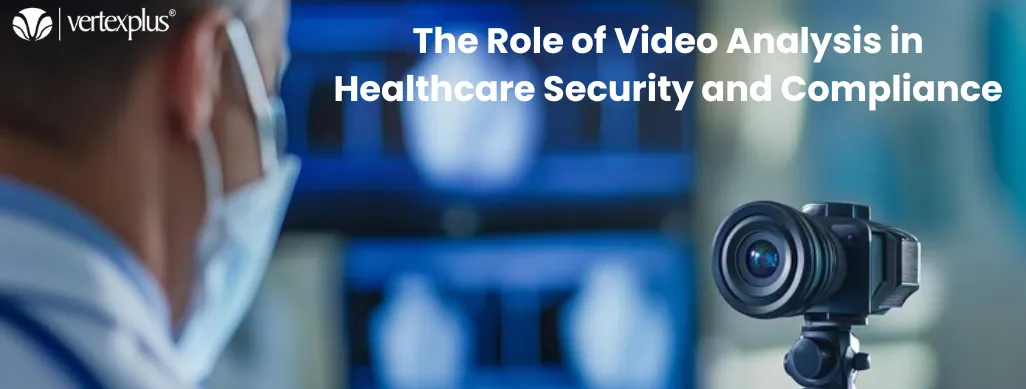
We use cookies to ensure that we give you the best experience on our website.
By using this site, you agree to our use of cookies. Find out more.

Is Your Healthcare Facility Truly Secure?
Hospitals and clinics may look safe from the outside, but are they truly protected from internal risks and compliance gaps? With increasing threats to patient privacy, rising cases of unauthorised access, and growing pressure to meet regulatory standards, the traditional approach to surveillance often falls short. This is where video analytics software steps in. Read on to understand how smarter video solutions are redefining security in healthcare.
Video analytics software refers to intelligent surveillance systems that automatically process and analyse the video shots to detect irregular patterns, behaviours, or events. Unlike simple CCTV systems that record videos and store them, these analytical tools are actually used for active monitoring, alert generation, and compilation of key data points for review in actuality or in a deferred manner.
Within the healthcare domain, technology plays a significant role in:
Evolving systems with the integration of a visual analytics tool Canada enabled hospitals to rise above passive monitoring into smart observing, acting systems lest a critical moment is missed.
Medical facilities are a peculiar place. Apart from just saving lives, they hold vast amounts of personal data. Hence, unlike other security concerns, it is high here indeed.
Here is why enhanced security is considered a must today:
These threats can be tremendously mitigated through a modern video analytics-based proactive monitoring solution that ensures safety and compliance.
Video analysis is not merely about content monitoring; it actually studies those contents and advertises an alert whenever any recognised pattern is detected. Let's see how it differentiates:
Key Benefits:
High-Potential Applications:
Healthcare is a tightly regulated field. In many countries, non-compliance with data security and patient privacy standards can result in serious penalties.
Here�s how video analytics software assists with compliance:
An additional party to ensure another layer of accountability could, in fact, force healthcare establishments not just to meet but to exceed the regulatory conditions.
Video analytics, already claiming space in healthcare, finds here some instances of its application:
In every case, a visual analytics tool in Canada helps bridge the gap between what�s happening on the ground and what needs attention from security or administrative staff.
No system is perfect, and deploying intelligent video tools in healthcare requires careful planning.
Key Challenges:
To address these, healthcare organisations must create transparent policies, involve IT and legal teams early in the process, and invest in scalable video analytics software that meets both their security and compliance needs.
The future of video analysis in healthcare appears bright. It is a fast-moving field, promising even finer insight and hence prediction.
Some emerging trends are the following:
With the integration of an advanced visual analytics tool Canada, the future of healthcare is not only safer but also smarter.
The demands of modern healthcare go beyond clinical excellence. Security, compliance, and proactive risk management are now just as critical to patient care.
By investing in intelligent video analytics software, hospitals and clinics can create safer environments, reduce legal risks, and improve operational efficiency. Whether it involves preventing unauthorised personnel from entering restricted areas or alerting staff that a patient is in need of help, this technology is playing an essential role in shaping the emerging world of healthcare security.
Together with visual analytics software for Canada, healthcare facilities do not only gain control but also the ability to foresee situations before they escalate.
Main Takeaways: The future of healthcare is for those who recognise the urgency of acting now. One must not wait for compliance breaches or security issues for a surveillance upgrade.
Unlike standard CCTV systems that simply record and store footage, video analytics software actively monitors live feeds and uses intelligent algorithms to detect unusual behaviour, unauthorised access, or safety risks. It sends real-time alerts, enabling faster response and improved situational awareness in critical areas like ICUs or drug storage zones.
Yes, when implemented correctly, video analysis can be compliant with HIPAA and other healthcare data protection laws. Video analytics software must be configured to ensure patient privacy, restrict access to sensitive footage, and maintain secure storage. Additionally, features like facial blurring and access logs further support regulatory compliance.
Surveillance in patient rooms is a sensitive area. It may be allowed under specific conditions, such as patient consent, medical necessity, or when monitoring high-risk patients. Facilities using visual analytics tools Canada should always balance safety with patient privacy, following legal guidelines and ethical practices.
Video analytics software stores detailed logs and marked footage that can be easily retrieved and reviewed after an incident. It provides time-stamped evidence, helping investigators understand what happened, when, and who was involved. This improves accountability and assists with legal or insurance documentation.
Some essential best practices include:
Leave a Comment
Your email address will not be published.